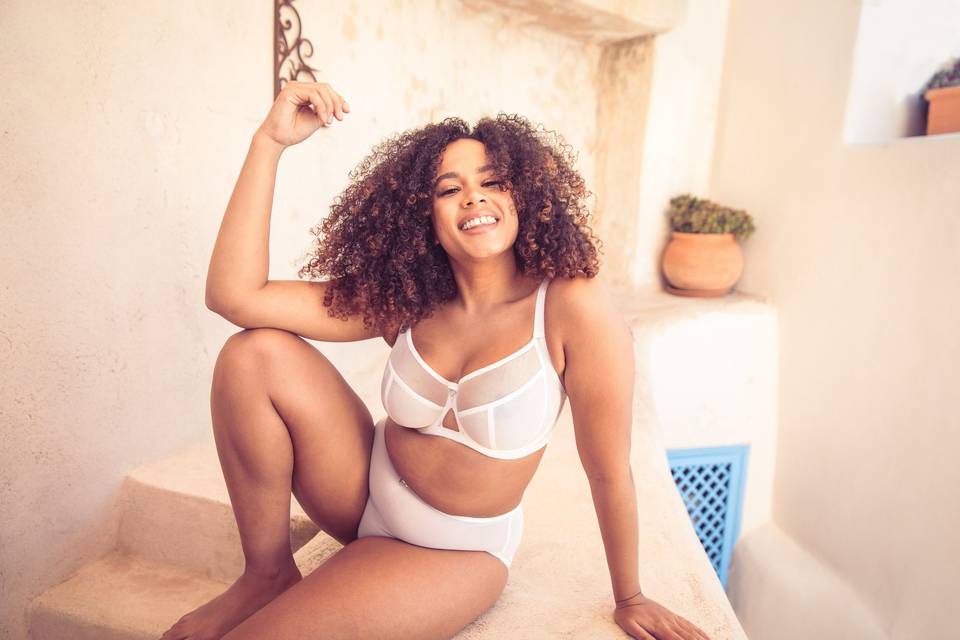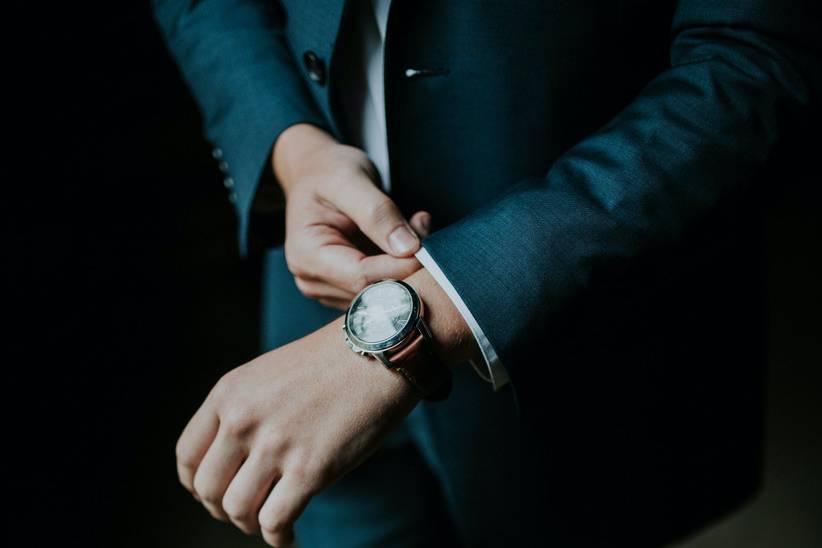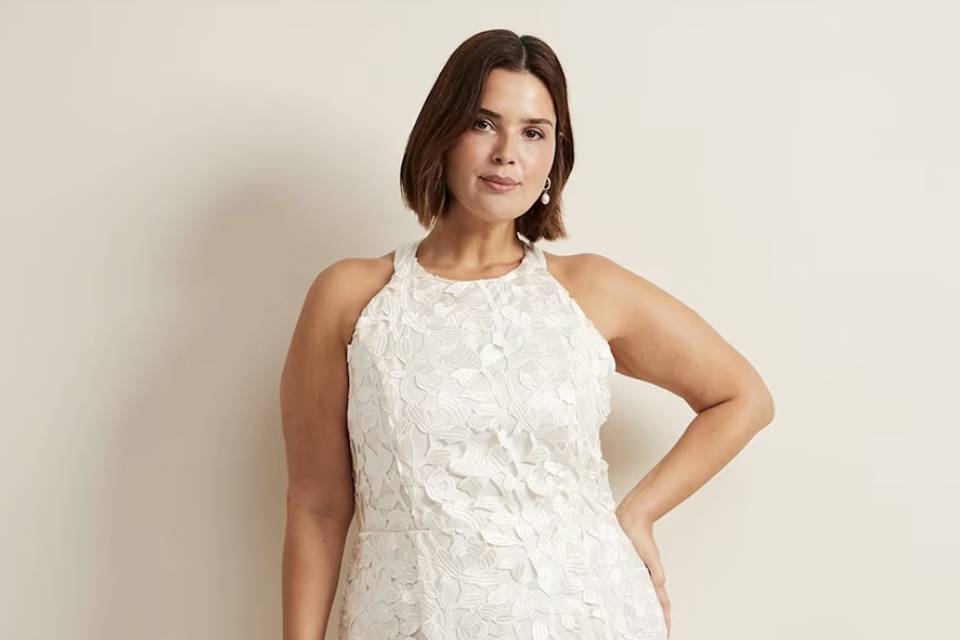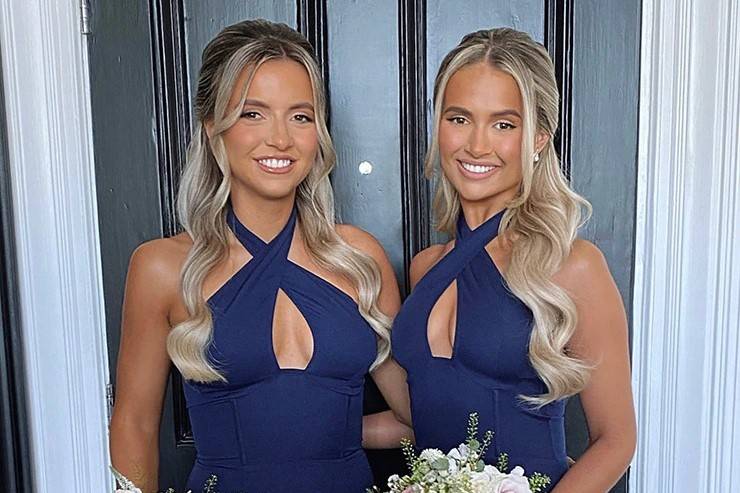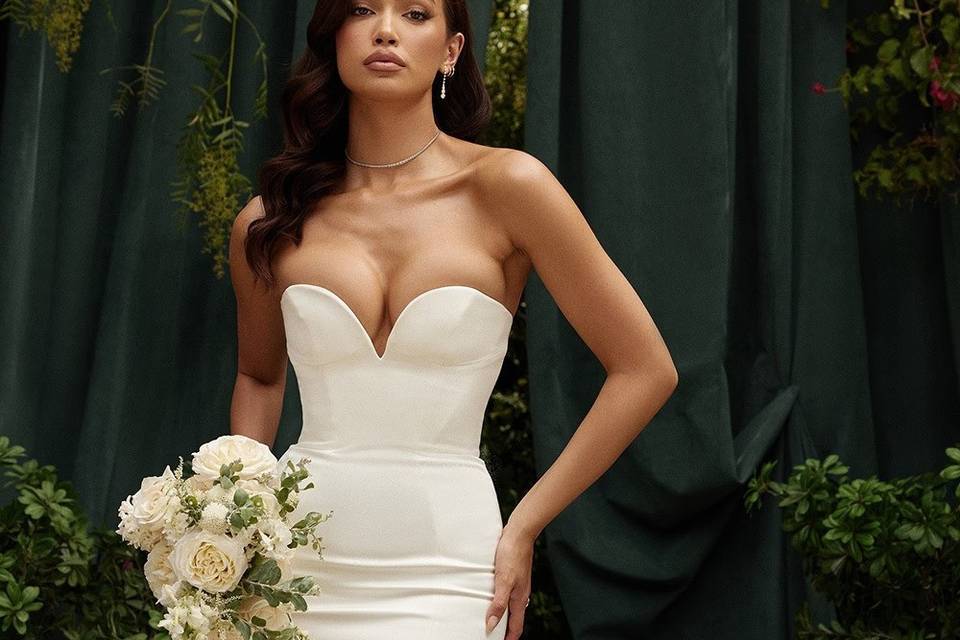Everything You Need to Know About Wedding Dress Alterations and Fittings
To help you feel confident and beautiful in a perfectly fitting wedding dress, we’ve got everything you need to know about altering your wedding dress and bridal gown fittings.


Bridal gown fitting appointments – where a seamstress or fitter will work out which wedding dress alterations need to be made – don’t quite elicit the same excitement levels as shopping for wedding dresses in the first place. However, they are key in helping you feel like the best version of yourself on the big day.
“In general, unless you’ve gone down the bespoke or maid to measure route, wedding dresses are made in the most appropriate standard size for your measurements and then tailored to fit,” explains designer Kate Halfpenny.
“Very few women’s measurements fit a ‘standard size’ because we’re all unique, and the fitting process is a time for us to sculpt your dress to your own gorgeous figure.”
Not only are dress fittings there to ensure the perfect fit, but they also allow you to customise the design of your wedding dress – whether that’s adding sleeves, swapping a zip for a corset back, or something else altogether.
What’s more, there are practical alterations that can be made to help with your on-the-day comfort, such as having a bustle added to a dress with a train so you can move around with ease. The whole process generally takes just two or three appointments, but you can have as many as you need.
- Does Every Wedding Dress Need to be Altered?
- How Do I Find a Tailor for Wedding Dresses Near Me?
- How Much Does it Cost to Alter Wedding Dresses?
- How Far in Advance Should I Book a Bridal Gown Fitting?
- What is the Typical Timeline for Wedding Dress Alterations?
- What are the Steps Involved in the Wedding Dress Alteration Process?
- What are the Different Types of Wedding Dress Alterations?
- How Much Can I Alter my Wedding Dress?
- What is a Wedding Dress Bustle?
- What Should I Bring to a Wedding Dress Fitting?
- What If My Weight has Changed Since I Ordered My Wedding Dress?
Everything You Need to Know About Bridal Gown Fittings and Alterations
Our tailor-made guide with handy FAQs will explain everything you need to know about wedding dress alterations – from what to expect during your bridal fitting appointments to costs, finding a professional dress tailor, and more.
Does Every Wedding Dress Need to be Altered?
It’s likely that the majority of wedding dresses will need to be altered in some way, even if it’s just a few tweaks here and there. And any wedding dress can be altered thanks to talented and dedicated seamstresses.
“Where one bride might need a very slight alteration – perhaps to the hem length – another might need to have more intricate adjustments to ensure a perfect fit on the big day,” explains Rebecca Baddeley of award-winning wedding dress boutique TDR Bridal.
As high street or online wedding dresses are becoming more and more popular, it’s still advised to take your dress along for a gown fitting. Even if you’re not buying your wedding dress from a boutique, dress alterations will make all the difference to the fit of a high street or vintage dress, too.
How Do I Find a Tailor for Wedding Dresses Near me?
If you’ve bought your wedding dress from a bridal boutique, it may have an in-house wedding dress alterations service. This is usually the best option to go with as you’ll be working with professional seamstresses who are more than familiar with your dress design. Plus, it’ll help you stick to your fitting timeline.
If an in-house service isn’t available, almost all boutiques will be able to recommend a local seamstress or bridal dress tailor who specialises in wedding dress alterations.
If you’ve purchased a pre-loved or second-hand dress [link: ], a high-street wedding dress or a gown from a sample sale, you can still contact your local boutique. Sometimes their alteration services aren’t exclusive to brides who’ve bought dresses from the store, or they’ll be able to put you in touch with a reliable seamstress.
How Much Does it Cost to Alter a Wedding Dress?

The costs will vary depending on how much work is needed and where you are. But given how key alterations are to making you feel your best on the big day, it’s definitely worth building them into your wedding budget.
Your boutique should be able to give you an estimate of alteration costs once you’ve chosen your dress, though you should treat this as a guideline only. “In general, I’d recommend allowing anywhere between £100 to £500,” says Rebecca.
As a guideline, the most expensive part of the fitting is usually the hem. “Changing your heel height or going up or down a dress size once alteration appointments have begun will inevitably mean you may need to budget extra,” Rebecca adds.
Of course, bespoke changes – such as adding straps, embroidery, or beading – will raise the price.
How Far in Advance Should I Book a Bridal Gown Fitting?
Most brides will be booked in for their first fitting around six to eight weeks before the wedding date. However some tailors and bridal boutiques have longer timelines, upwards of 10 weeks, to allow enough time for the seamstress or dress tailor to work their magic.
What is the Typical Timeline for Wedding Dress Alterations?

“Three to four weeks later (or around two weeks before the big day), brides will return for a second fitting to make sure they’re feeling super confident in their outfits,” Rebecca at TDR bridal adds.
“At this point, if a bride has requested a slight design change or her weight has fluctuated, a third appointment can be arranged.”
What are the Steps Involved in the Wedding Dress Alteration Process?
- First bridal gown fitting
You’ll likely have said “yes” to the dress some months before, so in your first fitting you’ll try it on again in your size and the seamstress will assess where it needs adjusting. This will probably take an hour and will be your longest appointment. - Second fitting
In your second wedding dress alteration appointment, if it’s still not quite the perfect fit, your seamstress will usually add tacking (temporary stitches) to check the fit and make any final tweaks. - Third fitting
The final fitting is usually when you’ll get to see yourself in the dress as it’ll look on the day. You’ll take your wedding dress home with you at this point, too. Ask your boutique for advice about safely storing your dress at home ahead of the wedding.
This is also your opportunity to discuss any extra customisations, such as the addition or removal or sleeves. Remember, your seamstress is the pro here, so go with an open mind. If they warn against a tweak or suggest an alternative, it’s for a good reason. Trust their experience and knowledge of the garments.
However, if you find that what they’re suggesting doesn’t really match up with what you want, ask for a second opinion, particularly if you’re not using a specialist wedding dress service.
Not everyone is as experienced in working with certain types of fabric or making certain customisations, so it’s not offensive to take the dress to a different seamstress for a second opinion.
Ultimately, however, you get what you pay for – so make sure the seamstress you choose is right for the job in hand.
Bridal Gown Fitting Tips and How to Avoid Rushing Your Alterations
There are many ways you can help make your wedding dress alteration process as seamless as possible. We know the run up to your wedding day is a very busy time, but if there’s one thing you don’t want to approach in a rush it’s altering your wedding dress as you’ll want to guarantee you look and feel amazing on your special day.
Some ways to prepare include:
- Reach out to as many bridal boutiques as you can and book your appointments early
- Schedule all your bridal gown fittings in advance. You can always rearrange and cancel any unnecessary ones.
- Listen to your seamstress, tailor and bridal boutique. You may have your own unique style and creative ideas for your dress but leave it to the experts to let you know what’s actually possible and how it will turn out.
What are the Different Types of Wedding Dress Alterations?
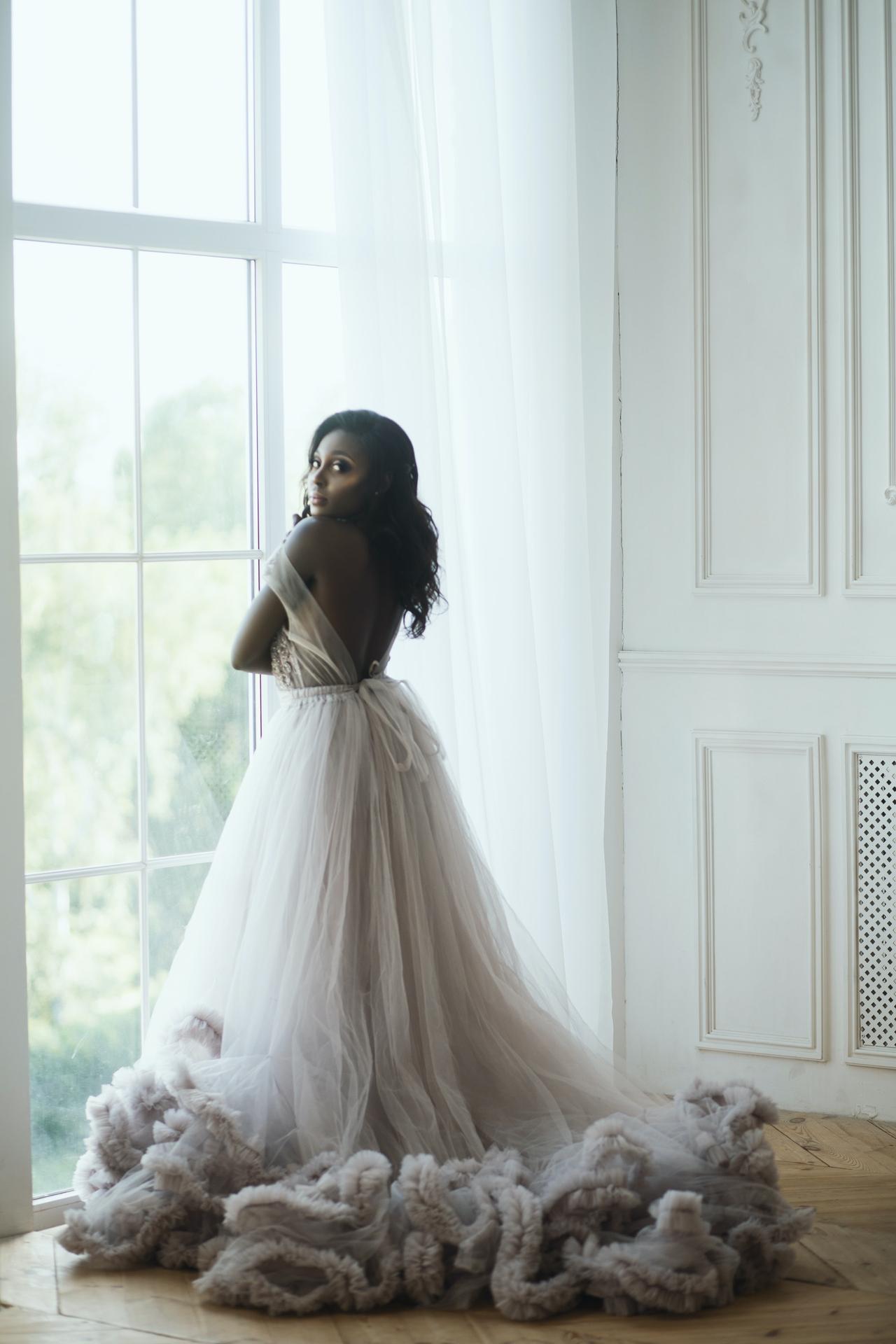
The most common alterations are related to the fit of a gown – so, tailoring the hem length and the fit on the side seams and shoulders. These basic adjustments are essential and key to ensuring you feel confident and supported on the day – not to mention avoiding any wardrobe malfunctions.
Other common requests include the addition of bespoke features, such as sleeves, pockets, bra cups, and corset backs, as well as custom coverage such as modesty panels or raising a neckline.
“For those gowns that have long trains, the hem will be adjusted to your height and tapered at the sides – not to mention, of course, the addition of a bustle to allow you to hit the dance floor,” adds Rebecca.
“We have infinite ways of adding ribbons, buttons and hidden loops that will play an integral part when it comes to shortening the train for the evening celebrations.”
How Much Can I Alter my Wedding Dress?
If you’re keen to customise your dress, a lot depends on the original design, fabric, and embellishments.
Talk to your boutique before you order the dress about what alterations can be made. If you want extensive changes, it’s important to work with a seamstress who already knows the dress design well.
“Our team are able to customise most of our international designers’ dresses as well as our own couture gowns to create an individual look,” says Jane and Maria of Mirror Mirror London, whose wedding dress alterations are made on-site in their design studio in London.
“Adding or removing sleeves, making a new top or skirt, or raising the neckline or lowering the back are just some of the changes we’ve made over the years.”
What is a Wedding Dress Bustle?
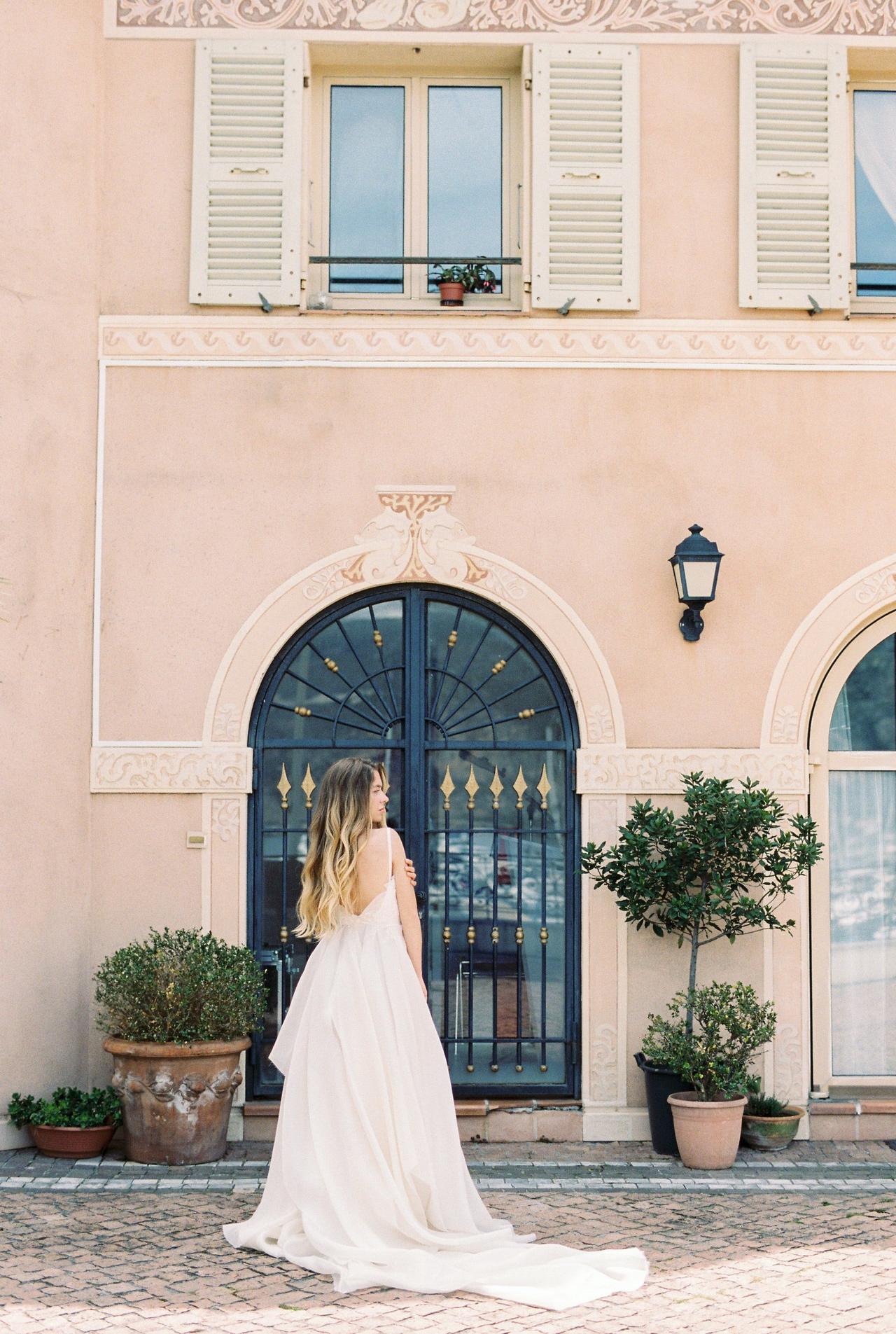
‘Bustling’ is for wedding dresses that come with a train. Essentially, it’s a method of lifting the train so it’s easier for you to move around (and dance!). It makes the dress far more practical for all-day wear.
A bustle will be offered at the first fitting, as there are many different ways a dress can be bustled, so you can pick the look that you prefer.
Take this opportunity to bring along a member of your wedding party so they can learn how the bustle works in time for the big day – self-bustling is tricky business.
What Should I Bring to a Wedding Dress Fitting?
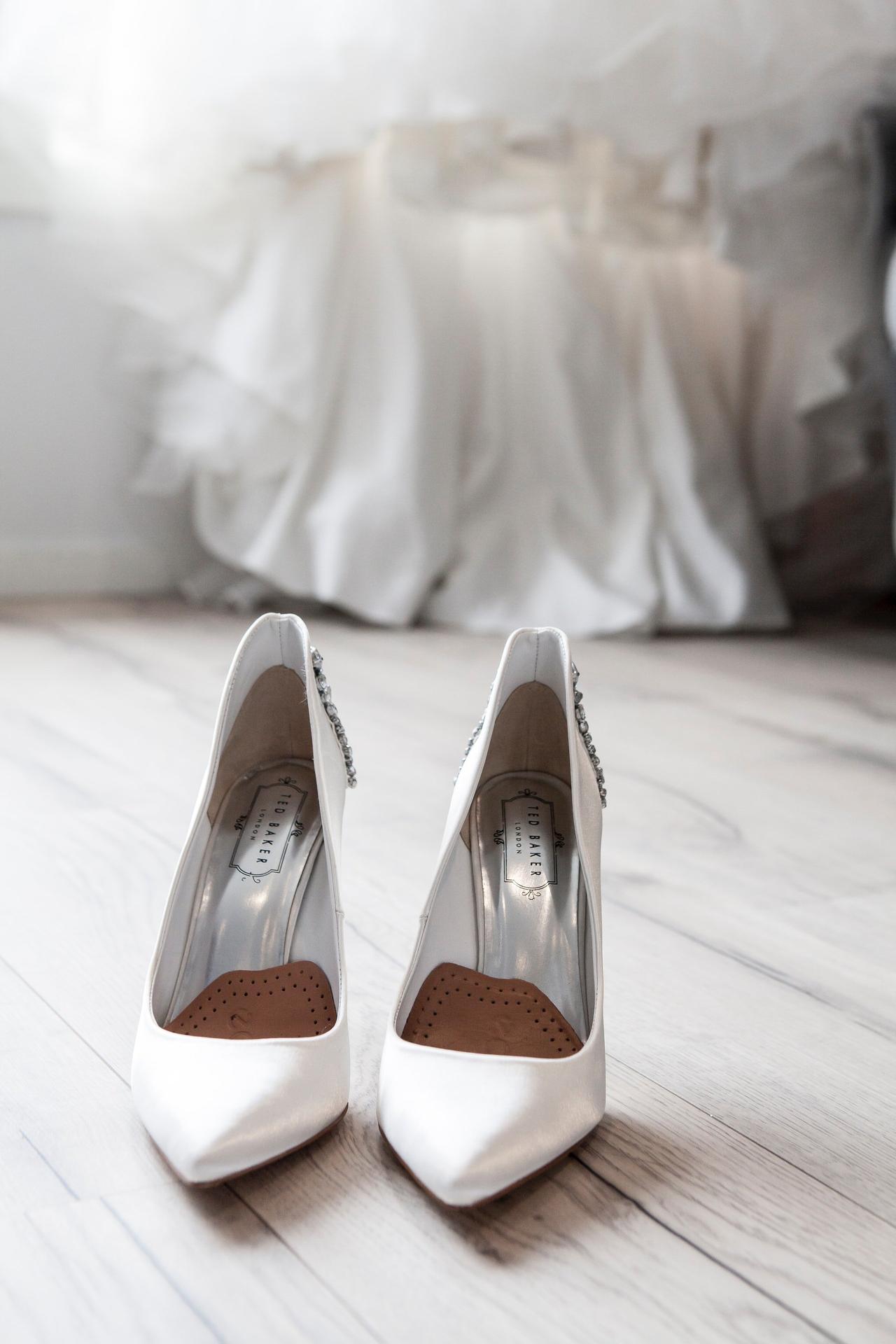
It can be tempting to bring your whole wedding posse along for a look at the dress as well as all your wedding accessories to get the finished look. You actually need very little with you at your bridal gown fittings, but here’s a little checklist to make sure you’re fully prepared.
- Just one guest – certainly no more than two. You may need help getting in and out of your dress, or if you’re having a bustle, it’s worth bringing a trusted friend or family member who can learn how to assist you on the day. However you don’t want too many people around to distract the seamstress or intervene with the process.
- Your wedding shoes. You’ll want to make sure your alterations reflect the stature and height you’ll be on your wedding day while you’re wearing your wedding shoes. Without them, tailoring may become too short or too long.
- Wedding accessories - for the final fitting. For your last fitting, we suggest taking along your accessories, so you can get a sense of your overall look
Avoid wearing makeup.It can be tempting to go with a full face of makeup or even get your makeup done for an extra confidence boost, but we’d advise keeping makeup to a minimum – a foundation streak or mascara splotches on your dress are not conducive to a stress-free fitting. - Well-fitting underwear - the same set for each fitting. “Maintain consistency with your choice of undergarments,” says Rebecca. “Source some flattering underwear (and by this, I mean underwear that sits smoothly against the body with no VPL, preferably in a colour that matches your skin tone) prior to your appointment.
Wear that same underwear to your second fitting.”
If you’re feeling confused about what to wear to your appointments, check in with your fitter or boutique beforehand and they will be able to advise.
What If My Weight has Changed Since I Ordered My Wedding Dress?
“Your dress is usually made in the size most appropriate for your measurements, so if you find those have changed dramatically, the first thing to do is talk to your boutique before your appointment,” says Kate Halfpenny.
"At the time of ordering, if you suspect your body will change for any reason – pregnancy, for example – then see if you can get measured closer to the wedding. You can normally let out or take in a wedding dress by one size, perhaps two; a more drastic change is tricky.
"Honesty is the best policy and the more notice we have the better, to help us work with you to make your dress perfect for the big day."


